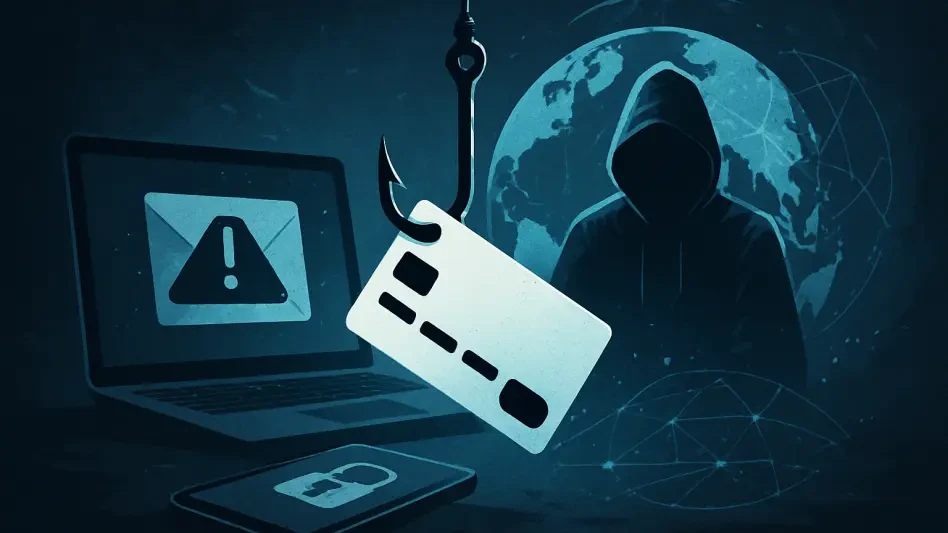In a world increasingly reliant on digital infrastructures, the importance of cybersecurity has never been more pronounced. With cybercriminals constantly refining their tactics, exploiting not just technical vulnerabilities but human psychology, organizations face a relentless barrage of potential threats. A significant portion of cyberattacks now hinges upon social engineering—strategies that manipulate human behavior to extract sensitive data or gain unauthorized access. Against this backdrop, one of the most critical defenses available to organizations is not exclusively technological, but human: transforming employees into vigilant protectors of security.
The Evolution of Social Engineering
As cybercrime becomes more sophisticated, social engineering has evolved into a major concern for businesses worldwide. This form of attack targets individuals by leveraging emotions such as trust, fear, and curiosity to prompt actions that compromise security systems. Phishing, the most prevalent technique within this domain, exemplifies the cunning of such tactics, posing as legitimate communications to deceive unsuspecting victims. Variants like spear phishing and whaling add layers of specificity, targeting individuals with personalized messages that enhance the likelihood of successful deception.
The adaptation of these methods to new technologies has broadened their impact. Cybercriminals have incorporated generative AI to produce increasingly convincing fraudulent communications. By crafting emails and messages that mimic real interactions with high fidelity, attackers enhance their ability to infiltrate organizations. Additionally, ingenious tools such as deepfakes and AI-generated identities further obscure the line between genuine and fraudulent communications. The challenge for employees is the heightened difficulty in discerning authenticity online, necessitating comprehensive education and vigilance.
The Pervasiveness of Phishing
Phishing remains a predominant threat in digital spaces, frequently serving as a gateway for more severe cyberattacks. Designed to entice recipients to perform security-compromising actions, phishing schemes are crafted to exploit individuals’ behavior and the trust inherent in daily online interactions. By mimicking familiar entities or trusted sources, these schemes trick users into relinquishing sensitive credentials or downloading malicious software. The increasing occurrence of targeted attacks, such as spear phishing tailored for specific users, and whaling aimed at high-ranking executives, underscores the necessity for a proactive security posture.
Organizations must recognize the insidious nature of these tactics. The attack vectors rely less on technical acumen and more on psychological manipulation, bypassing even the most sophisticated technology defenses. Consequently, businesses incur significant financial losses, operational disruptions, and reputational damage. Prominent examples illustrate the stark realities of phishing’s success. With financial losses such as those experienced by Toyota Boshoku Corporation, which amounted to tens of millions, organizations worldwide are reminded of the necessity of fortifying human-centric defenses.
The Risks Beyond Financial Loss
Social engineering attacks precipitate severe repercussions that extend beyond direct financial implications. Regulatory penalties and loss of customer trust are profound outcomes that can impair an organization’s long-term stability. The reputation of a company is often its most valuable asset, and breaches resulting from a failure to detect social engineering ploys can long tarnish its image. Moreover, operational disruptions resulting from such attacks can impede a business’s ability to function effectively, hampering productivity and competitive advantage.
The human error factor is central in these breaches, as attackers primarily exploit cognitive biases and psychological triggers. This distinct characteristic of social engineering positions human engagement as both a point of vulnerability and a potential bastion of defense. Employees are at the frontline of interaction, making it imperative for organizations to equip them with the knowledge and skills to identify and resist intrusive tactics. As digital landscapes continue to shift, maintaining a robust education infrastructure becomes indispensable.
Human-Centric Solutions to Cyber Threats
Amid the ongoing evolution of cyber threats, businesses must recalibrate their defense strategies to encompass human-centric measures. Employee training emerges as a pivotal defense mechanism in circumventing the effects of social engineering attacks. By empowering employees with the knowledge to detect and redirect attempts at manipulation, organizations can transform personnel into a crucial line of cybersecurity defense. Security awareness programs, specifically curated to address the nuanced methodologies employed by attackers, play a considerable role in forging a culture of resilience and vigilance.
The Role of Security Awareness Programs
Security awareness programs are integral to shielding organizations from the pervasive threats posed by social engineering attacks. Such programs aim to familiarize employees with the tactics, techniques, and procedures commonly employed by cybercriminals. Beyond theoretical knowledge, the emphasis is placed on cultivating a discerning mindset capable of recognizing anomalies and responding appropriately. Through personalized training modules, employees learn to scrutinize suspicious activities, report them, and intervene before potential breaches occur.
Investment in security awareness yields substantial returns in risk management. Organizations reporting significant reductions in successful attacks attribute these achievements to well-structured education programs. Fundamental to these initiatives is the creation of formal policies that outline security objectives, delineate training scope, and specify employee responsibilities. For optimal engagement and retention, content must be relevant and delivered via formats that encourage active participation, such as simulations, gamified exercises, and microlearning modules.
Reinforcing Security Through Simulations
Phishing simulations emerge as particularly effective tools in training programs, serving as practical exercises that emulate real-world scenarios without exposing actual systems to risk. These simulations provide employees with the opportunity to confront staged attacks, enhancing their capacity to recognize red flags like inconsistent branding or unusual requests. Through controlled environments, employees are encouraged to critically assess communications, developing skills that are fundamental in daily operations.
Continuous testing and feedback loops bolster these efforts by reinforcing learned behaviors and integrating updates on emerging threats. This approach ensures that awareness levels remain elevated and that employees adapt to the changing threat landscape. By practicing tests, workers solidify their understanding, competence, and confidence in mitigating potential breaches, gradually building a robust human firewall within the organization.
Adaptive Approaches in Training
Organizations that adopt adaptive learning technologies in their training curricula can significantly enhance the efficacy of these programs. Personalized content tailored to the specific needs of different employees ensures that training remains relevant and applicable. The integration of modern learning techniques, such as gamification and interactive scenarios, contributes to sustained engagement and fosters continuous skill development.
In the face of relentless cyber threats, a strong security culture encompasses behavior beyond technical measures. Encouraging employees to question unusual requests, report anomalies, and collaborate in maintaining vigilance is foundational to an organization’s defense capabilities. As technology assists in detecting phishing attempts, the cultivation of a collective ethos of scrutiny and preparedness remains indispensable. It is through these efforts that businesses can nurture an environment where employees feel empowered to act as defenders of cybersecurity.
Building a Security Culture
Building a security-conscious organizational culture involves multifaceted approaches that extend beyond technological implementations. It requires fostering an environment where employees are naturally inclined to verify requests and report suspicious activities without hesitation. An engaging training program lays the groundwork by instilling a sense of shared responsibility and collective vigilance. Furthermore, reinforcing positive reinforcement and recognition for proactive measures encourages staff to embrace their role in security initiatives enthusiastically.
Promoting transparency in communication ensures that employees remain informed of potential threats and feel equipped to handle them. Regular briefings, coupled with accessible channels for reporting concerns, create an informed community that actively contributes to maintaining security. Such practices cultivate a resilient organizational nucleus capable of adapting to evolving challenges in real-time, resulting in a unified front against social engineering threats.
Preparing for Future Threats
As the cyber threat landscape remains dynamic, organizations must adopt a forward-thinking approach to anticipate emerging challenges. Regular updates to training programs and policies must be undertaken to maintain alignment with current trends and technologies. Embracing innovations and learning from other sectors can provide insight into adaptive strategies that enhance security capabilities and adaptability to change. This proactive stance not only safeguards current operations but positions organizations as vectors of excellence in cybersecurity preparedness.
Ensuring preparedness entails strategic partnerships with industry experts and ongoing assessments of existing defense mechanisms. Investing in external evaluations provides an objective lens through which to analyze vulnerabilities and address gaps promptly. Constant improvement reflects commitment and flexibility, proving that, while cyber threats evolve, so too can the defenses mounted against them.
Transforming Employees into Cybersecurity Advocates
While technology remains a crucial facet of modern cybersecurity strategies, the inclusion of robust human-centric approaches provides organizations with a fortified defense posture. Through education, empowerment, and engagement, employees can be transformed into proactive advocates for cybersecurity, positioning the organization as resilient in the face of evolving challenges. As cybercriminals continue to exploit human weaknesses, well-prepared personnel become vital assets in intercepting attacks before infiltration occurs.
The key to success lies in the balance between technology and human initiative. Employees must understand the weight of their role in organizational security and be furnished with the tools and knowledge to uphold it. By aligning corporate goals with individual duties, organizations stand to benefit from a workforce that is both aware and prepared to counteract the multifaceted threats of the digital age.
Harnessing Employee Potential
Harnessing employees’ potential as cybersecurity defenders involves fostering a proactive mindset that extends beyond routine actions. Employees should not only be aware of the consequences of cyber threats but equipped to tackle them actively. Regularly updating training programs to reflect current threats fosters a culture of adaptability, ensuring that employees are always prepared for new challenges.
Moreover, emphasizing the significance of collaborative problem-solving underscores the collective responsibility of securing the organization. Encouraging teamwork and cross-departmental communication enhances the flow of information, minimizing silos and allowing cohesive threat response strategies. Organizations can effectively convert their workforce from passive participants in security to active and informed defenders through unity and engagement.
Conclusion: Future-Ready Cyber Defense
In today’s world, where digital infrastructures form the backbone of operations, the importance of cybersecurity has reached unparalleled levels. As cybercriminals continue to level up, perfecting their methods, their strategies delve beyond technical vulnerabilities and into the nuances of human psychology. Organizations face an unending wave of potential threats. Notably, many of these cyberattacks employ social engineering, which cleverly manipulates human behavior to access sensitive information or unauthorized entry. Within this context, organizations need a dual approach to defense. The technological aspect is pivotal, but what’s equally crucial is the human aspect—turning employees into vigilant guardians of security. Providing education and fostering a culture of awareness can empower staff to recognize and counteract these tactics. Human vigilance is an invaluable line of defense, enabling organizations to anticipate threats, protect valuable data, and maintain resilience against the crafty maneuvers of cyber adversaries.








